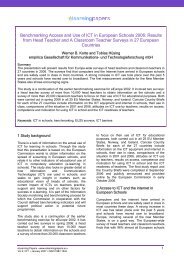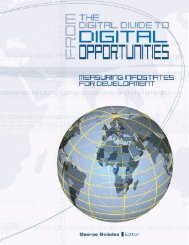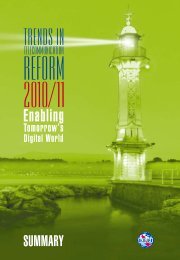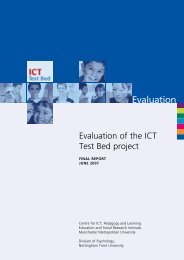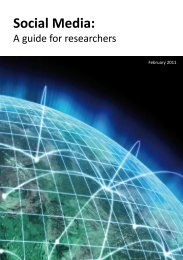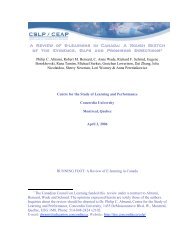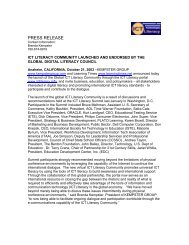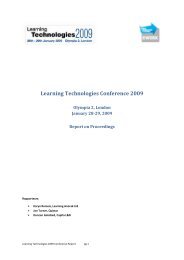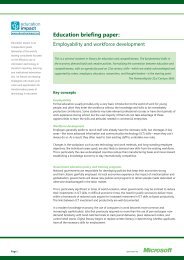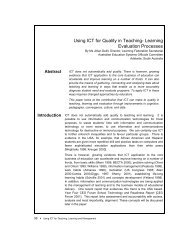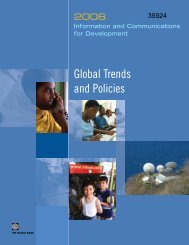147 pages pdf - ICT Digital Literacy
147 pages pdf - ICT Digital Literacy
147 pages pdf - ICT Digital Literacy
Create successful ePaper yourself
Turn your PDF publications into a flip-book with our unique Google optimized e-Paper software.
Pedagogy & Webagogy -- Ready, Set … TRAIN and FACILITATE!<br />
Chapter 12: Pedagogy & Webagogy<br />
- Ready, Set … TRAIN and FACILITATE!<br />
This is the second category that received the most tips from our readers and once<br />
again, no surprise since after all training is our core business. Whether you are teaching<br />
in a classroom, online or blending both formats, what are some of the ways our<br />
contributors suggest you move successfully from theory to practice?<br />
#505: Can You Hear Me Now?<br />
Use an auto-mute function on the audio portion for web conferencing to control background noises.<br />
Karen Clark<br />
Bank One<br />
#506: Event and Activity Timing Guidelines<br />
The length of the overall event is most effective at 1 - 1.5 hours maximum for content awareness with limited<br />
interaction and 2 - 3 hours maximum for learning-based topics with significant interaction. While classroom<br />
course design tactics can be applied in the virtual environment, activities must be shorter in length to hold the<br />
participants' attention. Individual activities: 1-2 minutes, virtual team activities: 30 minutes max.<br />
Lynne G. White<br />
Accenture<br />
#507: The 60-45-35-10 Minute Rule<br />
Build in time for questions and discussion. If I am preparing a 60 minute webinar or teletraining<br />
seminar, I prepare 45 minutes of material, but only plan to use 35 minutes of it. The other 10<br />
minutes of material are just in case I get the world's least interactive audience. Also, plan time<br />
for introductions, requests ("Please don't use a cell phone", "Please don't put us on hold", etc.)<br />
and for completing the call (filling out an evaluation, requesting more info, etc.)<br />
Doug Chasick<br />
CallSource<br />
#508: Use The Learn-O-Meter<br />
In a synchronous session, teachers cannot always read how well ideas and skills are being<br />
learned moment to moment. Most virtual classrooms have a built-in "understanding meter" that<br />
students can use to indicate (click on) their level of confidence during a learning exercise.<br />
Teachers should periodically stop and ask for students to anonymously indicate their level of<br />
understanding and comfort of the material being taught. Albeit a closed ended question, if used<br />
often and appropriately, teachers can proceed or go back and re-teach a topic in a more<br />
efficient manner, thus ensuring a more successful learning experience.<br />
John M. Opron<br />
Johnson Controls, Inc.<br />
#509: Keywords Are A Way Of Life<br />
Teach all learners how to pull searchable topics out of all lessons. Keywords can be used as shorthand<br />
summaries, reviews or audits to see if they are getting the message. It is a great way to reinforce e-Learning.<br />
For example, when teaching someone how to do his or her own career portfolio, they should be able to identify<br />
3-5 key words to describe their best skills. There is no need for complete sentences, they may be short phrases<br />
such as training, leadership, management, instructional design, graphic arts, etc.<br />
Anna Graf Williams, Ph.D.<br />
Learnovation LLC.<br />
701 e-Learning Tips by The MASIE Center www.masie.com 101



